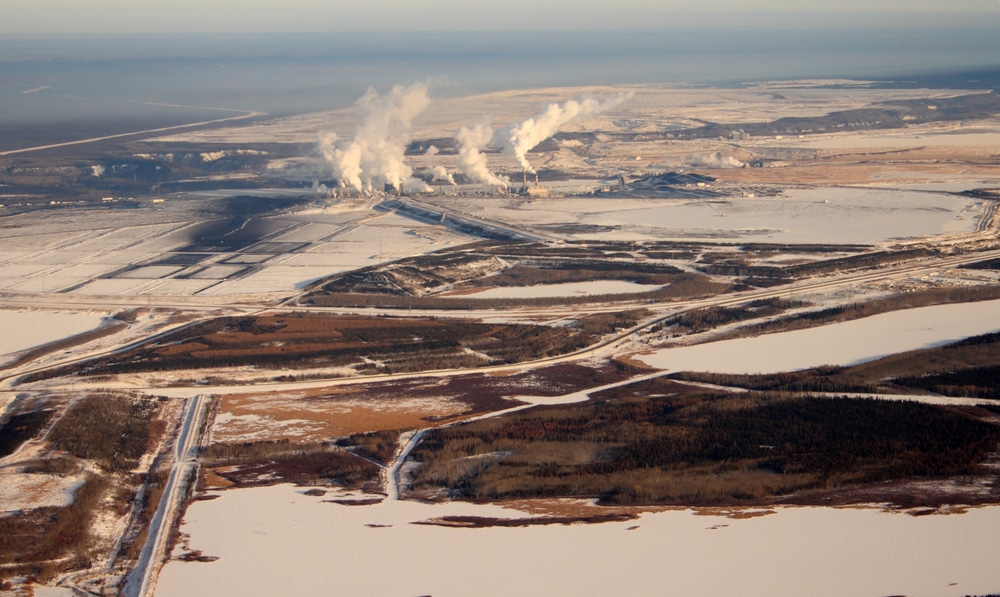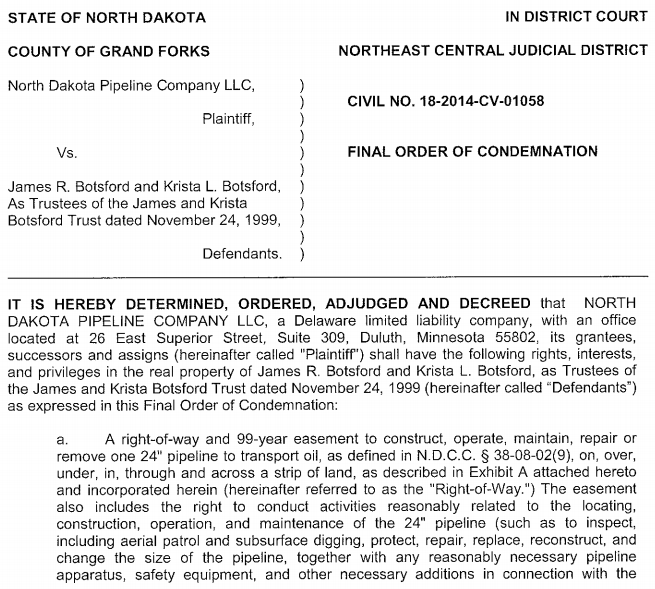A federal court has ruled that the Enbridge Alberta Clipper (Line 67) cross-border tar sands pipeline expansion project, permitted covertly and behind closed doors by the Obama Administration, got its greenlight in a legal manner.
The ruling — made by Michael J. Davis, a President Bill Clinton-appointee — comes just over a year after several environmental groups brought a lawsuit against the U.S. Department of State for what they said was a violation of the National Environmental Policy Act (NEPA). NEPA calls for robust public hearings and public commenting periods for any major proposed energy infrastructure projects, referred to by some as the “Magna Carta of environmental law.”
But first the basics: President Barack Obama and the State Department gave Enbridge its initial Alberta Clipper permit in August 2009, during congressional recess. In November 2012, Enbridge requested an expansion of that pipeline from its initial 450,000 barrels per day capacity to 880,000 barrels per day.
Seeing TransCanada‘s sordid experience with Keystone XL in action, Enbridge decided that a year into the expansion permitting project, it would do what environmental groups have coined a “switcheroo.”
That is, they dreamt up the idea to add pump stations on each side of the border to two different pipelines (in name only, but part of the same pipeline system) — Line 3 and Alberta Clipper, respectively — and avoid having to go through the conventional State Department presidential permit process for border-crossing projects.
Enbridge then wrote emails and letters to the State Department describing its plans, which high-level officials proceeded to sign off on, without consulting the U.S. public.
The public did not learn of this “illegal scheme” until it was published in the Federal Register in August 2014, though emails show the State Department and Enbridge worked together to permit the pipeline behind the scenes beginning in at least January 2014. Those emails came to light due to a DeSmog investigation, obtained via the administrative record for the now decided upon U.S. District Court lawsuit.
Alberta Clipper is one piece of the broader Enbridge-owned multi-part pipeline system that DeSmog has called the “Keystone XL Clone,” which does what TransCanada’s Keystone Pipeline System does: shuttle diluted bitumen (“dilbit”) from Alberta down to U.S. Gulf coast refineries and in part to the global export market.
Ruling, Reaction
Judge Davis’ legal ruling rested on an interesting legal theory, the same one brought forward by Enbridge and the State Department. That is, even though the State Department signed off on the scheme, it was not an “agency action” and therefore NEPA was not in play.
Citing a mountain of legal cases in which this precedent has held, Davis wrote that “the overwhelming authority supports a finding that the State Department’s actions in this case are Presidential in nature, and thus not subject to judicial review.”
Environmental groups who brought this case to court say an appeal is on the table, though for now they are weighing all of their options.
“While the courts and the State Department sidestep their responsibility to protect our communities, Minnesotans are standing up and resisting Enbridge’s schemes in ever-increasing numbers,” Andy Pearson of Minnesota’s branch of 350.org said in a press release.
“From 5,000 people marching in St. Paul this summer to last month’s occupation of an Enbridge office in Duluth, the movement on the ground against this pipeline invasion is growing by the day. We’re disappointed that the courts didn’t step in today, but will continue to fight this expansion and will not be deterred.”
Sandpiper Pipeline
The Alberta Clipper ruling is not the only big legal decision concerning Enbridge as of late.
On November 18, North Dakota Northeast Central Judicial District Judge Debbie Kleven ruled that Enbridge has the authority to condemn the land of James and Krista Botsford to install the proposed Sandpiper Pipeline under the legal auspices of eminent domain. The Botsfords are a couple who have made national news as of late for conscientiously objecting to having a pipeline carrying North Dakota’s Bakken Shale oil obtained via hydraulic fracturing (“fracking”) underneath their land.
Enbridge will have access to the couple’s land for a 99-year period.
Image Credit: North Dakota Northeast Central Judicial District Court
James Botsford told DeSmog he “will appeal every part of this ruling” and is currently fundraising for the case on the GoFundMe crowd-sourcing platform.
Photo Credit: chris kolaczan | Shutterstock
Subscribe to our newsletter
Stay up to date with DeSmog news and alerts







